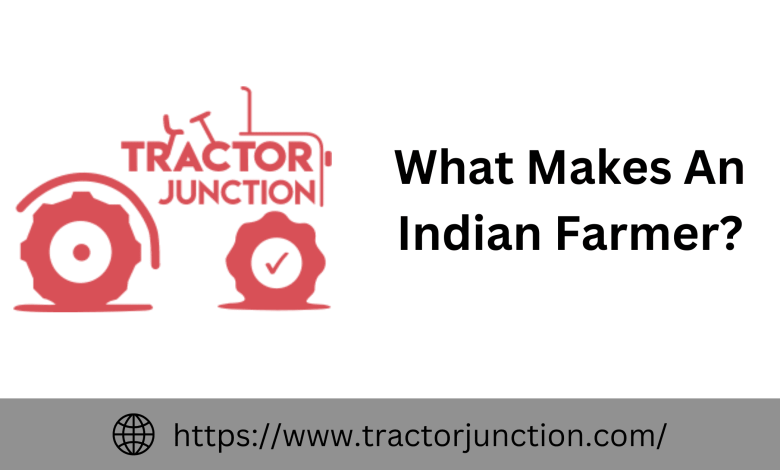Do You Know, What Makes An Indian Farmer?

The Indian farmers contribute to the country’s economy in droves. As the country has the second-largest farmland area in the world, more than 50% of the people there depend on farms in one way or another for their living.
Of course, that leaves us with this question – Who is an Indian Farmer? Can we call the individual who grows crops on their farmland a farmer? Or is it more than just that? Is there more to that definition? Join us as we investigate on the subtleties and nuances of what makes an Indian Farmer.
There are several hardships to being an Indian Farmer, and we will take a look at some of these as well. Some of them include the impact of climate change on the farmer, governmental regulations, and access to tech.
So how do they handle the ever-volatile climate and the shifting market conditions? Well, that is exactly what the core of this blog is about. So join us in understanding what it means to be an Indian Farmer.
Cultural Significance of Indian Farming
Starting from the Indus Valley Civilisation till the Mughal Empire, Indian agriculture has seen constant development both in terms of culture and methodology. Hence, it is safe to say that agriculture has been an unavoidable factor in the growth of the nation’s economy and social structure.
In India, agriculture has a long cultural history. Holidays like Pongal, Baisakhi, and Onam all honour the harvest and the products of farmers’ labour. The themes of farming and the environment have inspired a wide variety of traditional songs, dances, and folktales.
Over the years, Indian agriculture has also seen a great deal of innovation. In many regions of the nation, traditional agricultural methods, including crop rotation, mixed farming, and organic farming, are still in use. Several crop kinds that are now mainstays across the world, including rice, wheat, and sugarcane, originated on the Indian subcontinent.
Challenges that Farmers face
When talking about all the problems that farmers face in India, climate change takes the top spot more often than not. India is susceptible to an ever-changing climate, as it experiences floods, droughts, and erratic weather conditions. This makes the farmer’s job very tough in India.
Oftentimes, farmers are disheartened by the weather conditions that the country goes through. But what’s more, is that they are also at the mercy of how the market keeps fluctuating. They cannot decide the prices of their goods. They are mostly dependent on the middlemen to do so.
Despite this, the farming community in India is experiencing rapid growth with remarkable resilience. The farmers are blowing these challenges in the wind and forging ahead, showing no signs of giving up.
For example, they are adopting new farming techniques to deal with the climate change problem. And to battle the market volatility, they are forming cooperatives and accessing the market directly without getting any help from the middlemen.
These cooperatives also help the farmers farm better by giving them loans for investing on machinery and farm needs. Say, you are in a cooperative. You can get the whole Powertrac Euro 60 Price as a loan and move ahead with buying the tractor.
What Makes an Indian Farmer?
So, on to the core of this blog. What, indeed, does make an Indian Farmer? Some might say it is the size of their operation, while others might hold that it is the kind of crops they grow. But is this what makes a farmer?
Farmers in India can be catagorised by the size of the land that they are cultivating. Small-scale farmers make up the majority, and they farm their small land. They use traditional practices. On the other hand, large-scale commercial farmers depend on technology and grow crops which can be exported so that they get a profit.
In addition to these broad categories, there are also many other types of farmers in India, such as landless labourers, women farmers, and tribal farmers. Each group faces its unique set of challenges, from lack of access to land and credit to discrimination and marginalisation.
But, what makes an Indian farmer is more than just all these. Indeed, what makes an Indian Farmer is their resilience, as mentioned before. Their ability to keep moving forward despite any problem that might be in their way.
Government Schemes
The subject of government policy is next. Imagine that government regulations are like a coin with two faces. The advantages are on one side, while the disadvantages are on the other. There is no perfect policy, as there is with everything in the world.
There are several programmes in place to assist farmers. Yet, as was previously noted, every policy has its fair share of drawbacks. There are policies for subsidising on prices of machinery required. For example, if you want government’s support in cutting down the Swaraj 742 price, you can rest assured that you would get it!
By promoting locally grown food, speaking up in favour of laws that support sustainable agricultural methods, and holding our elected officials responsible for their actions, consumers may influence government policy. We may also help non-governmental organisations that encourage sustainable agriculture and seek to empower farmers.
Conclusion
As we come to a close, it’s critical to keep in mind that everyone has a part to play in assisting Indian farmers and advancing sustainable agriculture. Every action we take may have an impact, whether it is via educated consumer decisions, lobbying for laws that promote sustainable agricultural methods, or financial support for non-governmental organisations that encourage farmer empowerment.
Hence, I urge you to pause and consider how you personally feel about food and farming. What decisions can you make to encourage sustainable farming and give farmers more power? How can you speak out in favour of legislation that supports just and sustainable agricultural practises? Answering some of these questions will help you take the farm industry forward as a consumer.




